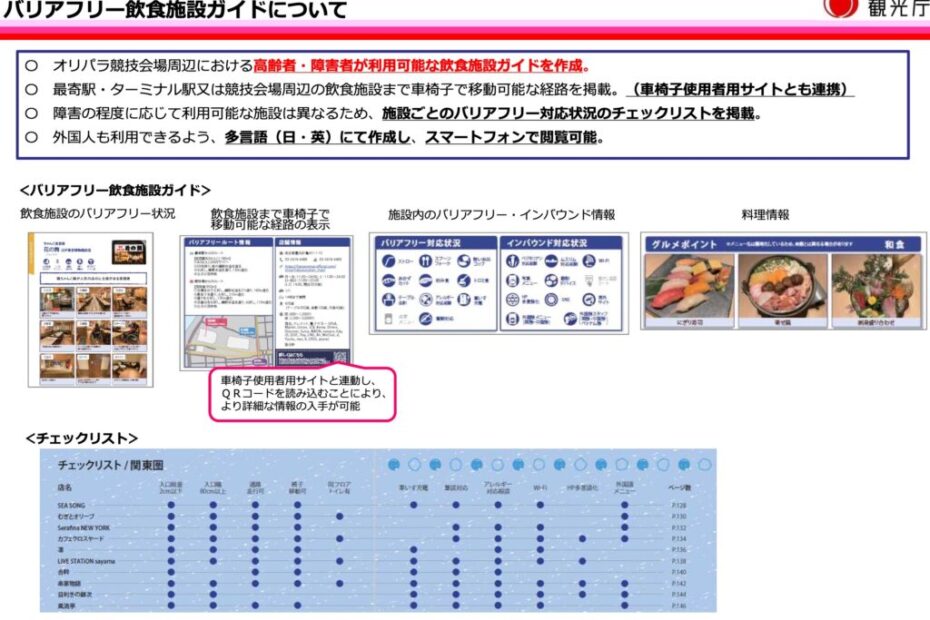The “Barrier-Free Eating and Drinking Facility Guide” surveyed / created by WheeLog! has been released on the Japan Tourism Agency website. It supports two languages, Japanese and English.
CLICK HERE FOR JAPANESE VERSION
CLICK HERE FOR ENGLISH VERSION
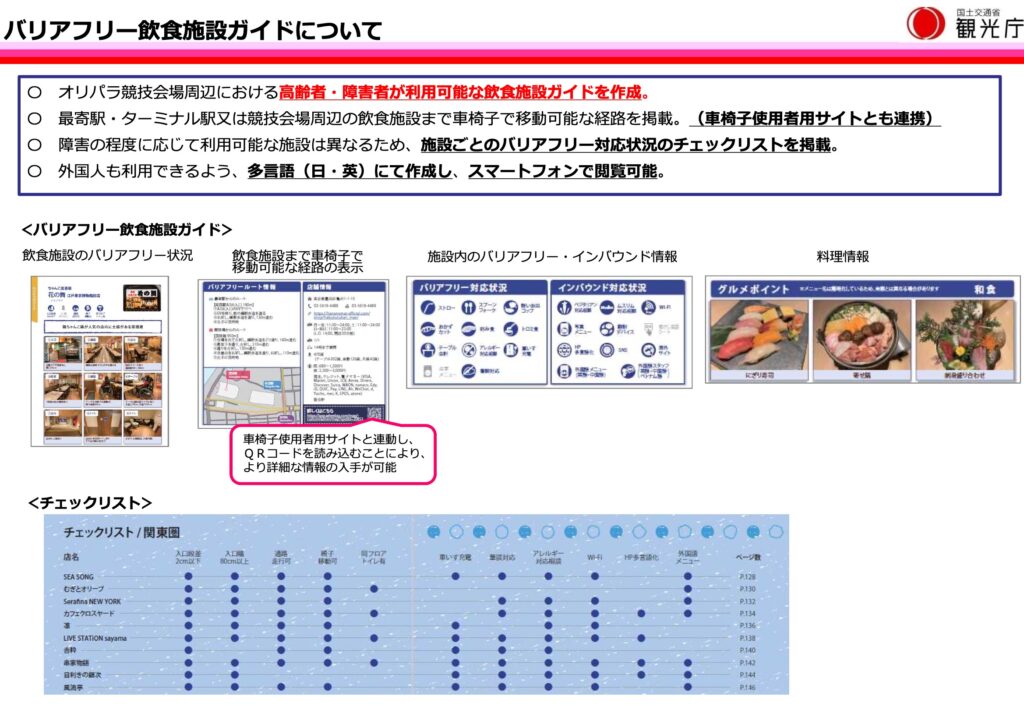
This guide was delivered in March 2020 as a business last year, but due to the impact of the coronavirus pandemic, its release was postponed for one year.
We have been postponing the release over and over again this past year, but it is finally available today!
This guide showcases more than 100 restaurants around the Olympic and Paralympic Games venues nationwide. Wheelchair users visited the shops as investigators and investigated barrier-free support in detail from their perspective .
We have posted the barrier-free points in detail using a lot of pictures from wheelchair users, so we hope you will take a look and refer to them.
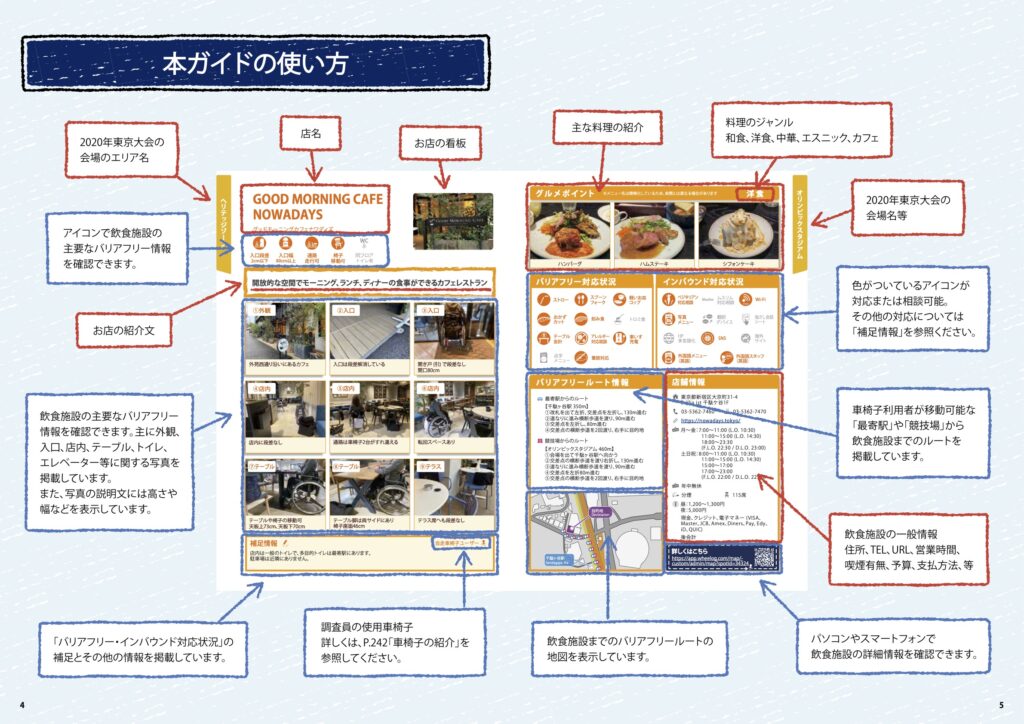
WheeLog!’s thoughts on the publication of this guide
For elderly people and people with disabilities, the conditions for using the facility and the necessary support and services differ depending on their physical condition. Information that allows each person with a disability to judge in advance whether or not they can use the facility is indispensable.
However, barrier-free information on restaurants that are highly likely to be used by the elderly and people with disabilities is not always available, and it is sometimes difficult to select restaurants with peace of mind.
Barrier-free information on restaurants is useful information not only for the elderly and people with disabilities, but for everyone . By disseminating information so that the elderly and people with disabilities can visit the restaurant with peace of mind, family and friends can also visit and enjoy the restaurant together.
By providing barrier-free information that matches the actual conditions of restaurants, it is possible to reduce the number of people who give up using the facilities because they can judge in advance whether or not they can use the facilities. It also helps to avoid troubles such as “I visited the site thinking that it was barrier-free, but there was actually an inconvenience .”
On the other hand, there are times when you say , “I actually put in a place I thought I couldn’t put in because of the barrier .”
This guide disseminates the surveyed information after people with disabilities actually visit restaurants that are already working to be barrier-free. All restaurant information posted emphasizes the perspective of the elderly and people with disabilities .
By promoting the provision of barrier-free information in this way, it is expected that elderly people and people with disabilities who have given up eating and drinking outside may be able to go out to eat and drink and sightsee.
We hope that all people involved in restaurants will use this as a reference when working on making their restaurants barrier-free and disseminating barrier-free information.
We hope that it will be a tool for elderly people and people with disabilities, including foreigners, to freely choose eating and drinking facilities and enjoy eating and drinking and sightseeing with peace of mind.
Last but not least, I would like to thank all the people involved in the restaurant who cooperated with this project, and everyone who cooperated with the survey / production.CLICK HERE TO DOWNLOAD THE GUIDE

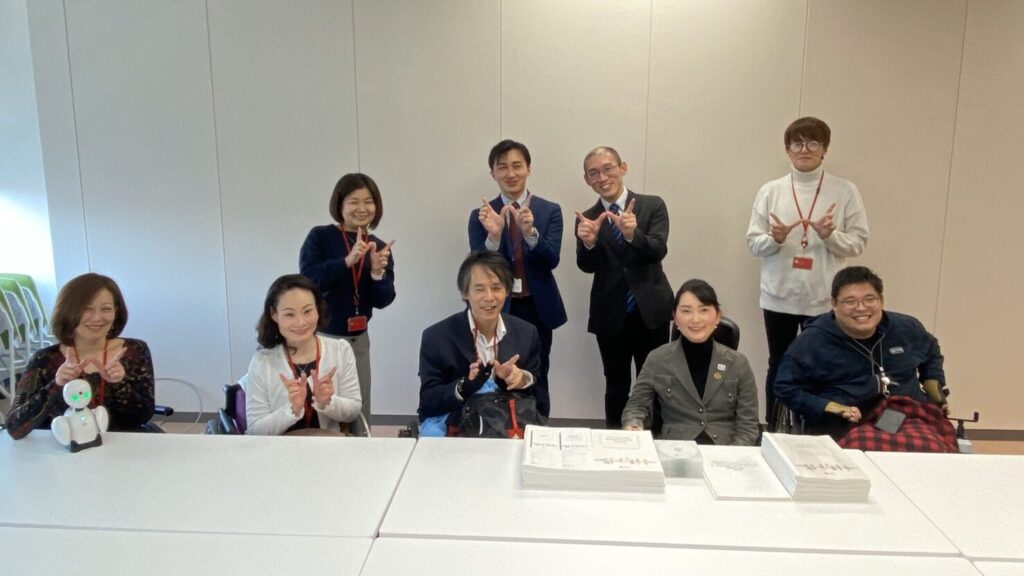
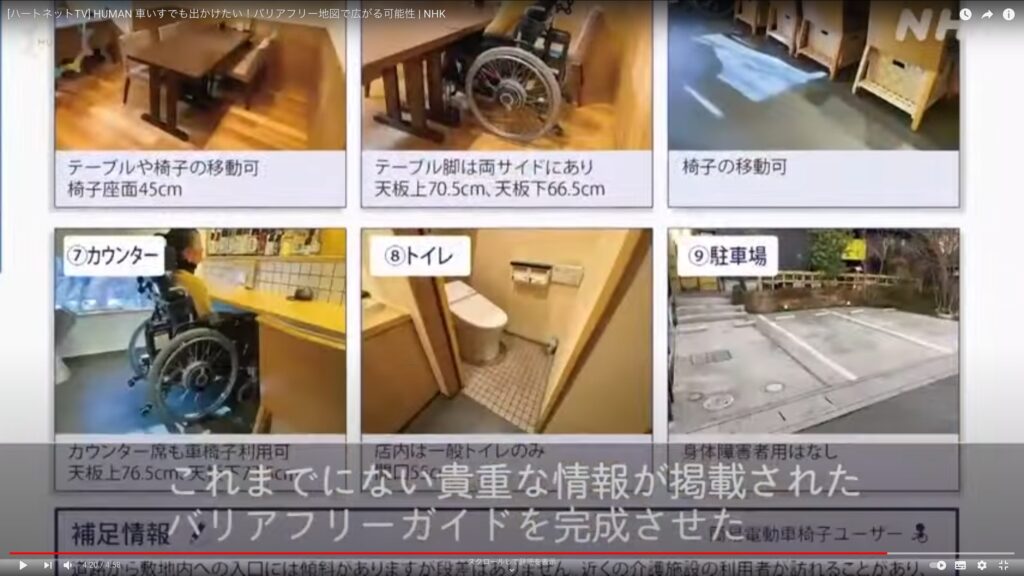
https://youtu.be/Wnw-9ypsH8Y?t=157
